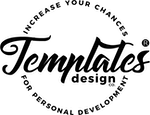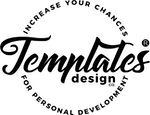If you have come this far looking for a complete guide to your resume and CV, and for knowing which is better, attention spoiler! None is better than the other. It’s usually assumed that the Resume and CV are the same thing. In some countries, this is true (UK, Australia, New Zealand, and Europe), but in others, they have slight differences in respect of the purpose, the length, and the layout as is the case with the United States and Canada.
What is a resume and what is a CV?
A resume is a document that summarizes your work experience, education, and skills, while a CV is typically used by professionals in the arts and humanities and academics who are applying for fellowships, grants, postdoctoral positions, university lecturerships, and teaching/research positions in postsecondary institutions or high-level research positions in the industry.
The resume typically includes your education and work experience, whereas the CV includes personal details such as extra-curricular activities and research projects.
A resume is a brief summary of your skills, education, and work experience. It is typically one page long and is used to apply for jobs. A resume is designed to give a quick overview of your qualifications and highlight your most relevant experiences and skills for a specific job or career field.
A CV (Curriculum Vitae) is a more detailed document that provides a comprehensive overview of your education, skills, and work experience. It is typically longer than a resume, often 2-3 pages or more, and is used in academic and research fields as well as for some professional jobs.
A CV includes more detailed information about your education and qualifications, as well as research and publications, if applicable. It is often used when applying for academic or research positions, or when seeking funding or grants.
In general, a resume is used to apply for jobs in the industry and a CV is used to apply for academic or research positions. However, there can be some overlap between the two, and it’s not uncommon for people to use a CV when applying for certain types of jobs outside of academia. It’s important to tailor your application materials to the specific requirements of the job or position you are applying for.
What are the main differences between a resume and a CV?
A resume and a CV (curriculum vitae) are both documents that summarize your professional and educational history, but they are used for different purposes and have a few key differences.
A resume is a brief document, typically one to two pages long, that highlights your skills, experiences, and accomplishments. It is used to apply for job openings and is usually the first point of contact between a job seeker and an employer. A resume should be tailored to the specific job or industry and should highlight the experiences and skills that make you the best candidate for the position.
A CV, on the other hand, is a longer document that provides a more comprehensive overview of your professional and educational background. It is typically used when applying for academic or research positions and is also used by professionals in fields such as medicine, academia, and international affairs. A CV is more detailed and comprehensive than a resume, and it is often longer, sometimes up to five or more pages. It includes a full list of your education, work experience, publications, research, awards, and other achievements.
In summary, the main differences between the resume and CV are:
- Length: A resume is typically one to two pages long, while a CV is longer and more detailed.
- Purpose: A resume is used to apply for jobs, while a CV is used to apply for academic or research positions or to showcase your professional achievements.
- Content: A resume highlights your skills and experiences that are relevant to a specific job or industry, while a CV includes a full list of your education, work experience, publications, research, awards, and other achievements.
CV example template (& what does it include?)
A CV example template is a document that provides a framework for a CV. It can be a sample CV or a template that you can use to create your own CV. A CV example template typically includes the following sections:
- Contact information: This includes your name, address, phone number, and email address.
- Professional summary: A brief overview of your professional experience and skills.
- Work experience: A list of your previous jobs, including the job title, company name, and dates of employment.
- Education: A list of your educational qualifications, including the name of the institution, degree earned, and field of study.
- Skills: A list of your technical and personal skills that are relevant to the job you are applying for.
- Additional sections: Depending on the job you are applying for, you may also want to include sections on your certifications, language skills, or volunteer work.
It’s important to tailor your CV to the specific job you are applying for and to highlight your relevant skills and experience. A well-written CV can help you stand out from other applicants and increase your chances of being selected for an interview.
Resume example template (& what does it include?)
A resume example template is a document that provides a general outline or structure for a resume. It includes sections for personal information, such as your name and contact information, as well as sections for your employment history, education, skills, and other relevant information. Here is an example of what a resume example template might include:
- Header: This section includes your name, contact information (such as your phone number and email address), and a professional summary or objective statement.
- Employment history: This section lists your previous job titles, employers, and dates of employment. You should also include a brief description of your responsibilities and achievements in each position.
- Education: This section includes the name and location of the schools you have attended, as well as the degrees or certificates you have earned.
- Skills: This section lists any skills or abilities that are relevant to the job you are applying for, such as computer programming languages, software expertise, or language fluency.
- Additional information: This section can include any other relevant information that does not fit into the other categories, such as professional associations or membership, volunteer work, or relevant hobbies or interests.
It’s important to keep in mind that a resume example template is just that – a guide or outline. You should customize your resume to fit your own unique background and experiences, and to highlight the skills and qualifications that are most relevant to the job you are applying for.
Conclusion
Yes, it’s true that the terms “resume and CV” (short for curriculum vitae) are often used interchangeably, but they can have different meanings depending on the country or region in which they are used. In the United States and Canada, a resume is typically a one-page document that outlines an individual’s work experience, education, and skills. It is typically used when applying for jobs in the private sector.
A CV, on the other hand, is more common in Europe, Africa, and the Middle East, and is used when applying for academic or research positions, as well as for some government jobs. A CV is generally longer and more detailed than a resume and may include information about research projects, publications, presentations, and other academic or professional achievements.
In some countries, a CV may be called a “resume,” but it is generally more comprehensive and includes more detailed information than a traditional resume. It’s always a good idea to research the specific requirements and expectations for job applications in the country or region where you are applying, to make sure you are presenting the appropriate type of document.
Photo by Ketut Subiyanto from Pexels



Leave A Comment